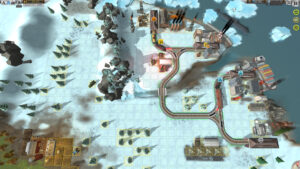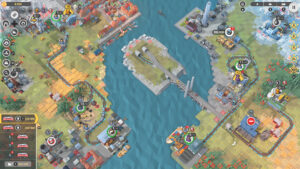I haven’t been posting much lately, and what I’ve posted has mainly been looks back at games I played a long time ago. You’d think that being stuck at home due to a pandemic would be a perfect opportunity to play lots of games and blog about them, but somehow I’ve only done the first part of that. As usual, I’m hoping I can get back into the habit of short daily posts.
So, what have I been playing? Several things. For one, I got onto a sizeable Hidden Object Game kick. These are my comfort food, the ludic equivalent of a popcorn movie. They come in a wide variety of shapes and colors, but there’s a sameness to them all. I recall that a bigwig at Marvel Comics once attracted some flak for saying that he wanted his company’s output to be the equivalent of vanilla ice cream. Hidden object games are like that.
And yet, one of the things I really appreciate about them is the variability! Every game does its own little tweaks on the formula, and over time, those tweaks accumulate into an evolution. I remember playing time-limited free trials of the first generation of the genre, downloaded from the Pop Cap website. Those were pure hidden object games, just a sequence of cluttered scenes with lists of things to find. There was a tendency to hide objects by altering their scale, making a pencil into part of a city skyline or whatever. That’s fallen out of fashion. The trend nowadays is more to exploit ambiguity in the object names: a “bow” could be a hair bow, a violin bow, or an archery bow; a “pipe” could be lead or meerschaum. For that matter, it might be a picture of a pipe, which is very easy to just look past of you’re not careful.
(Mind you, not all such word problems are deliberate. These games tend to be produced in foreign countries — one of the best studios making them is Artifex Mundi, which is based in Poland. And this means that every once in a while the object names don’t match English usage. The game might ask for a shovel, but the item you’re expected to click on is clearly a trowel. I assume that this means the designer’s native language uses a single word for both.)
Eventually, the genre started taking on features of adventure games, placing the hidden-object scenes into an explorable space. Big Fish’s Return to Ravenhearst (2008) was a landmark in this regard, pioneering the conceit that fuses the hidden object and adventure genres: that hidden-object sections represent searching for a specific object that you need to solve a puzzle elsewhere. Not that you can just pick up the one object you need if you happen to find it first, of course. And at some point, I don’t know when, some games started putting special-cased interactions inside the hidden object sections: you might be told to find a “lit candle”, and the scene contains an unlit candle and a book of matches, which you can pick up and click on the candle. There’s something oddly recursive about this.
Once hidden object games and adventures had hybridized, the resulting genre started de-emphasizing the hidden object sequences, using more diverse minigames. Some games even make the hidden object sequences optional, by, say, letting the player substitute a game of Mah Jongg Solitaire, which resembles a hidden object game in that it involves searching for things. There are even some adventure games, such as the Drawn series, that I’d put in the same genre because their UI, interaction, and art style all fit in perfectly, but which don’t have any hidden object scenes at all.
So the genre isn’t really defined by hidden objects, although those are a very common feature. Rather, it’s a family of cheap casual-positioned first-person adventure games marked by easy puzzles, frequent mini-games, full voice acting but limited animation, and a very distinctive art style: it’s a painted look, but with sharp focus and lots of rim lighting, and it’s distinctive enough to come as a surprise on the few occasions when I’ve encountered the style elsewhere. Often the UI uses lots of particle effects. Usually there’s an inventory bar at the bottom of the screen with a map and/or journal on the left side and something you can click on to get hints on the right. It’s all quite formulaic.
The stories, too, are mostly pretty formulaic, in a pulpish way. Usually there’s someone or something you’re pursuing, usually because they’ve kidnapped someone close to you, either in the opening cutscene or about a third of the way through the story. That’s your call to adventure. It’s almost the standard videogame Princess Plot, except that the player character is very often a woman. I’m tempted to say usually a woman, but this may be perceptual bias. At any rate, it’s a template that can be fit over basically any genre, and the designers exploit this by fitting it over as many genres as they can. There was a tendency for the early pure hidden object games to be about detectives, presumably because that was considered to be a reasonably good fit to the gameplay. There’s still a fair number of detective stories in today’s hidden object adventures, but you can just as easily be given the role of an elven hero, or a steampunk adventuress, or an ordinary woman who was minding her own business when her daughter was abducted by ghost pirates.
At any rate, there’s a zillion of the things, and they frequently get swept up into huge bundles. Usually I can finish one in about a day, or a single long evening — maybe two, if I get stuck. But I’m in no real danger of ever running out of them. They’re just always there, for when I need the comfort of the familiar.
 Comments(0)
Comments(0)
